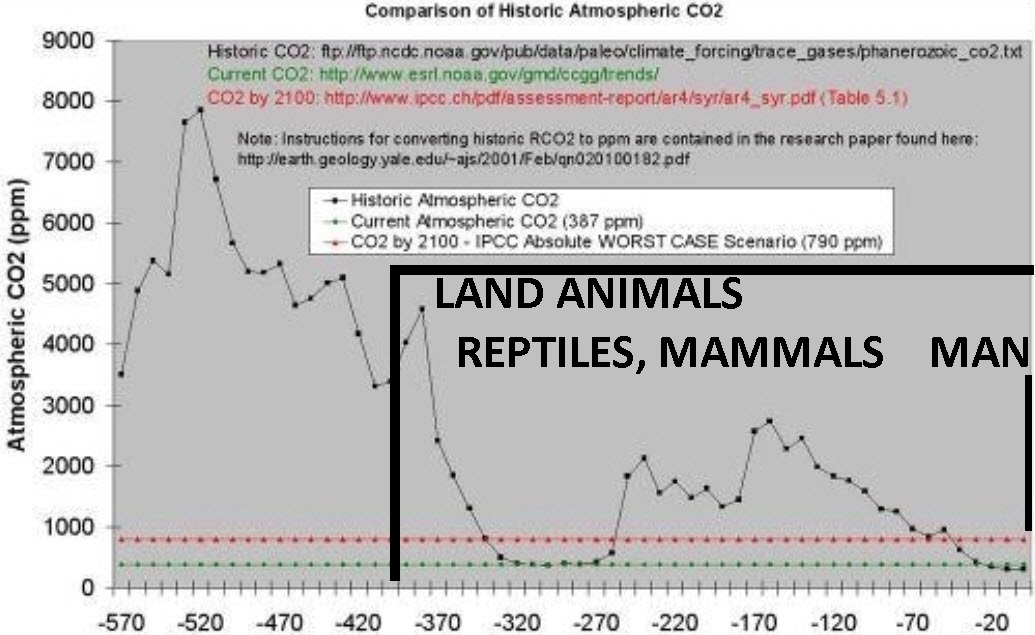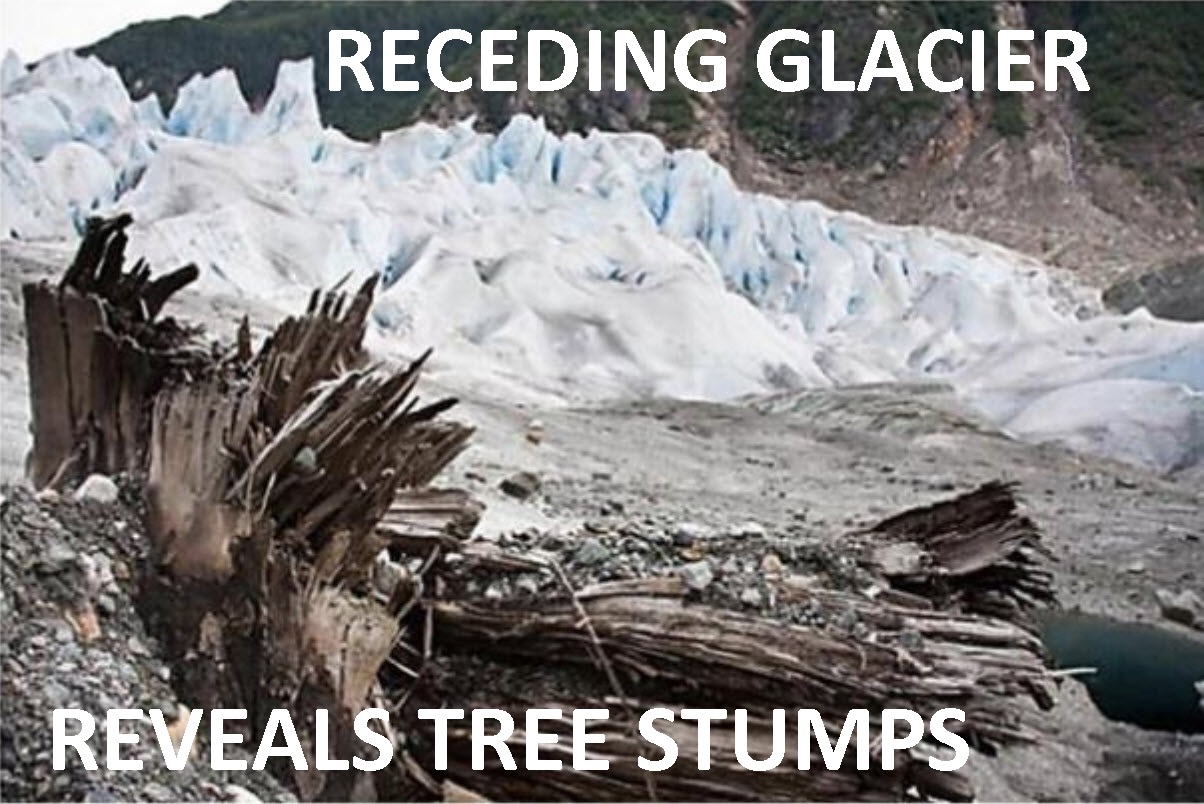This article first appeared in the December, 2020 issue of the Simpsonville Sentinel newspaper.
by Scott Crosby, scott@scottschoice.com, www.scottschoice.com
What do plants eat? For plants, what is their primary food source?
Plants require sunshine, carbon dioxide, and minor quantities of other nutrients.
Carbon Dioxide
You hear a lot of cries about the need to reduce the amount of carbon dioxide we produce. Why? Are we trying to starve plants? If we were to reduce the amount of CO2 in the atmosphere, the impact to plants would be like reducing our own intake of food each day.
We are told we should try not to create “too much” carbon dioxide. What is “too much”? What happens if we create more carbon dioxide?
Carbon Dioxide Levels
Carbon dioxide in the air is measured in “parts per million” (“ppm”). Currently, the Earth’s atmosphere contains about 400 ppm of carbon dioxide. As some people like to tell us, that level is up from somewhere in the lower 300s a few decades ago. Assuming more CO2 really is bad, the “worst case” scenario for CO2 levels by 2100 is projected to be about 800 ppm.
The amount of CO2 that is toxic to humans is far higher than 800 – 1200, or 4,000, or even 60,000 ppm, depending on the source. But only 800 ppm? You will not even notice the change.
But plants the world over will love it. They are already enjoying the increase to 400 ppm.
Fear-mongers like to say that 400 ppm of CO2 is the highest concentration in the past five million years. What they fail to mention is that Earth’s CO2 levels – even now, at 400 ppm, are lower than they have been in the planet’s entire previous history.
And that fearsome level of 800 ppm? From 250 million years ago until the most recent five million, the level of CO2 in the atmosphere was well above that – in the range of 1500 to 2500. That is the Earth’s true norm.
300 ppm to 400 ppm should be considered to be dangerously low.

Starving Plants
How do you starve a plant? Simple: reduce the amount of carbon dioxide available to it.
How much CO2 do plants need? Reduce the level of carbon dioxide in the atmosphere below 200 ppm, and plants starve; they will die. That is not all that much lower than what is present in the Earth’s atmosphere right now. We are already down in the 300-400 ppm range. Plant life world-wide is approaching the ragged edge.
Imagine if you continually had trouble breathing. Welcome to the world of plants.
Do we care? Could we survive without plants? No way. Whether you are a vegetarian or love that big, juicy steak, it is ultimately plants which, directly or indirectly, provide the nourishment every person and every animal needs to live.
Save a Plant!
We ought to be creating as much CO2 as we can.
The Earth is Greener than It Used to Be
Just the small increase over the last several years to about 400 ppm has resulted in an increase in plant life. Photographs taken from space show a greener planet than just a few decades ago.
Some folks try to explain that away by saying that massive tree-planting programs by China and India ought to get the credit, and there is no denying that India and China are out in front, in that regard – if all those trees survive.
But big swaths of more and deeper green are showing up all over the world, including a big north-south swath in North America, and more green in the Arctic polar region. CO2 did that.
Increased plant growth, of course, includes forests, and plants grown for food – agriculture. More food is being grown, making more food available for everyone. The increase in CO2 to 400 PPM is reducing starvation worldwide.
Naysayers are in a bind. How can they scare you if life is getting better?
But the naysayers only have so much nonsense at their command. CO2 is proportionally a minor “greenhouse gas”. By far the biggest greenhouse gas is water vapor. However, (1) with 75% of the Earth’s surface covered by water, (2) the evaporation of water playing such a major role in our weather, and (3) the impact of water vapor on the relative stability of the “biosphere’ – the environment in which we all live – even naysayers know enough not to argue about the impact of water vapor.
Compared to water vapor, the impact of the level of atmospheric CO2 on the weather is negligible.
But the higher the level of CO2, the more plants thrive.
Global Warming
Not only should we all be striving to increase the amount of CO2 in the atmosphere for the sake of plant life, but we should also be in full support of … global warming.
It was warmer a thousand years ago than it is now.
The world has been colder than average for a long time – for such a long time that too many take the current temperatures as “normal”.
The world was warmer a thousand years ago – so warm that the Vikings had colonized Greenland, and based their sustenance on farming. Then, about 1300, the world got colder. The Vikings had to leave Greenland; it became too cold to farm.
The Eskimos of Alaska tell us that the glaciers we have come to consider as normal were not always present; that glaciers are more recent arrivals into the Alaskan environment. Their spoken histories are corroborated by what is revealed by the melting of the Mendenhall Glacier, which has exposed numerous old tree stumps and roots overrun by the glaciers when they first appeared. Those stumps and roots have been dated from about 800 years ago.
Glaciers – and the cold needed to create them – are not normal.

The period from about 1275 to 1850 is called the “Little Ice Age”. The harsher weather affected not only the Eskimos and the Vikings, but those living in Europe as well. Rivers began freezing over; the children’s story of “Hans Brinker and the wooden ice-skates” reflected that colder time. The famous Stradivarius violins were made from the wood of trees from the late 1600s; it is conjectured that the wood’s greater density – which contributes to the superb quality of the sound – was due to the cold weather endured by the trees at that time.
Temperatures sank to their coldest about 1650, and have been slowly warming ever since – although, to this day temperatures still have not returned to those of a thousand years ago. Greenland is still too cold for farming. The glaciers in Alaska, though receding somewhat, are still present.
Take a cruise in Alaska’s Inside Passage, and your ship invariably will pause long enough near a number of glaciers for you to watch big chunks of ice break away and fall into the water, as the glacier flows inexorably from the mountains to the sea. If the ship and people on deck are quiet enough, you can even here the rumble of the glacier as its slow movement grinds away at the rocks beneath it. The sight is unforgettable – but the glaciers should not be there. The world is normally warmer than we are used to.
It was warmer five million years ago than it is now.
The Earth has been in a cooling trend for millions of years. Antarctica is covered with a thick layer of ice at present, but it was ice-free, up until 24 million years ago. The animals living on it were much like those living in modern Australia. Similarly, the Arctic Ocean was ice-free, up until 3 million years ago.

In the last 700,000 years there have been half a dozen “glacial periods” – Ice Ages – with ice covering much of Europe and North America. During these periods, the amount of CO2 in the atmosphere has declined. As noted, should it ever fall below 200 ppm, plants will starve, and all life on Earth would die with them.
Some say we are due for another glacial period – another ice age. It seems unlikely we could prevent such a massive change in global temperatures, but given the economic devastation that would result, it would certainly behoove us to do everything in our power to stave it off.
Just as the plants and animals which make up our food supply benefit from higher levels of CO2, they also benefit from a warmer climate.
Any long-term global-warming which humanity could cause might be our life-saver.
Thanks to the last decade’s improvements in fracking technology, we now have hundreds of years of “fossil fuels” available to us. Burning fossil fuels, of course, produces CO2. Staying with fossil fuels could be a life-saver.
So is all the “human-induced climate change” real, or is it fake? Are we really going to see melting ice and rising sea-levels? Actions speak louder than words: in August of 2019, ex-President Obama bought a house on Martha’s Vineyard that – according to the naysayers like him – will be underwater in 25 years.
For more details on these climate change issues, visit http://climate.scottcrosby.info.
● ● ●



